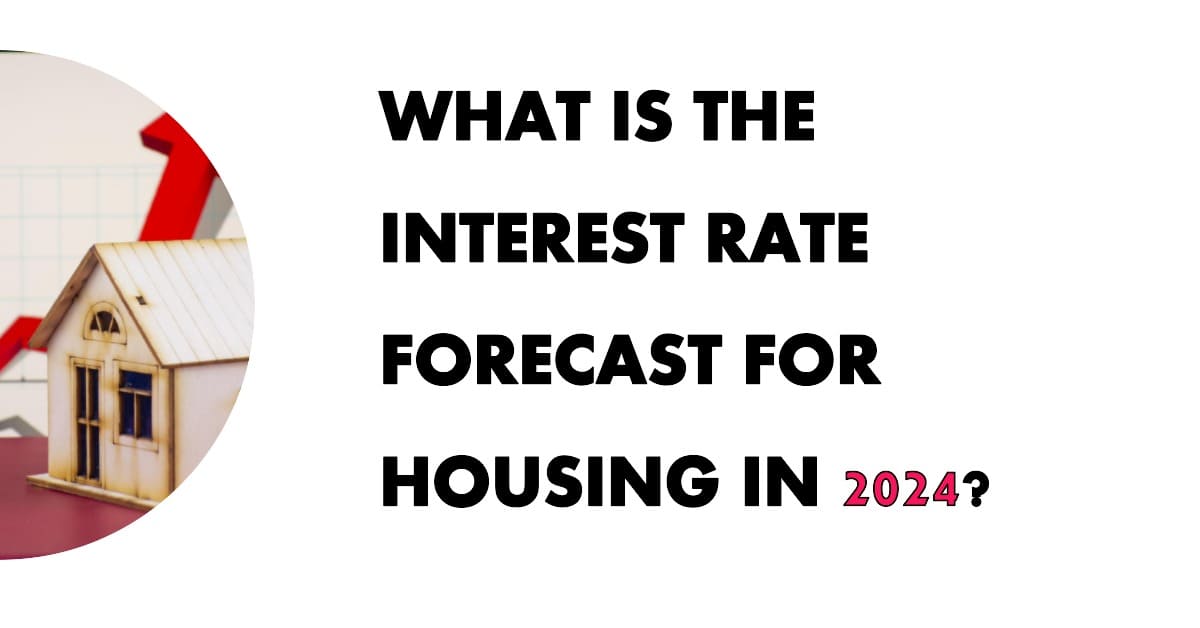For potential homebuyers in 2024, understanding interest rate forecasts is crucial for budgeting and making informed decisions. Here's a breakdown of what experts predict for 30-year fixed mortgage rates this year.
Interest Rate Forecast for Housing in 2024
Current Landscape (July 2024)
As of July 2024, the housing market has seen a significant rise in interest rates compared to the historically low rates experienced in recent years. Fannie Mae and the Mortgage Bankers Association (MBA) are two of the leading authorities in mortgage rate predictions. Let's see what their current forecasts entail:
- Fannie Mae: In their June housing forecast, Fannie Mae revised their average 30-year fixed mortgage rate for Q3 2024 to 6.8%, down from their previous projection of 7.1% (Forbes).
- MBA: The MBA's June Mortgage Finance Forecast also predicts a decline in rates, with the 30-year fixed-rate mortgage averaging 6.8% in Q3 2024. They anticipate the average rate to fall further to 6.6% by the end of 2024.
Key takeaway: Both Fannie Mae and MBA expect a slight decrease in interest rates throughout 2024, with the average rate landing around 6.6% to 6.8%.
Factors Influencing Interest Rate Forecasts
Several factors can influence interest rate forecasts, including:
- Federal Reserve Policy: The Federal Reserve's monetary policy decisions significantly impact interest rates. If the Fed raises interest rates to combat inflation, mortgage rates are likely to follow suit.
- Economic Performance: A strong economy can lead to rising interest rates, while a weak economy might prompt the Fed to lower rates to stimulate growth.
- Inflation: Inflation is a major concern for the Fed, and they may raise interest rates to control it. This, in turn, affects mortgage rates.
- Bond Market Yields: The yield on the 10-year Treasury note is often used as a benchmark for mortgage rates. If bond yields rise, mortgage rates are likely to follow.
It's important to remember that these forecasts are just predictions, and actual rates may vary.
Potential Scenarios for the Rest of 2024
There are two main possibilities for the remainder of 2024:
- Scenario 1: Rates Hold Steady or Decrease Slightly: If the economy weakens or inflation shows signs of cooling, the Fed may hold interest rates steady or even reduce them. This scenario would likely lead to stable or slightly lower mortgage rates for the rest of the year.
- Scenario 2: Rates Increase Further: If inflation remains high, the Fed may be forced to raise interest rates more aggressively. This could cause mortgage rates to rise further in the coming months.
The actual scenario that unfolds will depend on various economic factors.
Tips for Homebuyers in 2024
Here are some tips for homebuyers navigating the housing market in 2024:
- Stay informed: Keep yourself updated on economic news and interest rate forecasts.
- Get pre-approved for a mortgage: Pre-approval gives you a better idea of how much you can afford to borrow and strengthens your offer.
- Shop around for the best rates: Compare rates from different lenders to ensure you're getting the best deal.
- Consider a shorter loan term: A shorter loan term, like a 15-year fixed mortgage, will typically have a lower interest rate than a 30-year loan.
- Be prepared to adjust your budget: With higher interest rates, you may need to adjust your budget to accommodate a higher monthly mortgage payment.
How Interest Rates Affect Home Prices and Affordability
Interest rates play a significant role in both home prices and affordability. Here's a breakdown of how they impact each:
Impact on Home Prices:
- Inverse Relationship: Generally, there's an inverse relationship between interest rates and home prices. When interest rates are low, borrowing money to buy a home becomes cheaper. This increases demand for houses, leading sellers to potentially raise prices.
- Decreased Demand with Higher Rates: Conversely, higher interest rates make mortgages more expensive. This can reduce demand for homes, as fewer buyers can qualify for loans or afford the monthly payments at higher rates. Reduced demand can put downward pressure on home prices.
Impact on Affordability:
- Lower Rates, Higher Affordability: Lower interest rates directly translate to lower monthly mortgage payments. This makes homes more affordable for a wider range of buyers, potentially leading to bidding wars and higher prices in a hot market.
- Higher Rates, Lower Affordability: With higher interest rates, the monthly mortgage payment for the same loan amount increases. This can significantly reduce affordability, particularly for first-time homebuyers with limited down payments. As affordability declines, buyer demand may decrease, potentially leading to price adjustments.
Additional Factors to Consider:
- Market Dynamics: Local market conditions like inventory levels and competition can also influence how interest rates affect prices. In a seller's market with low inventory, even rising rates might not cause significant price drops.
- Long-Term vs. Short-Term: The impact of interest rates on prices may not be immediate. It can take time for the market to adjust to changes in rates.
Overall, interest rates are a significant factor in both home prices and affordability. Lower rates generally lead to higher demand and potentially higher prices, while higher rates can make homes less affordable and put downward pressure on prices.




